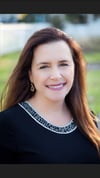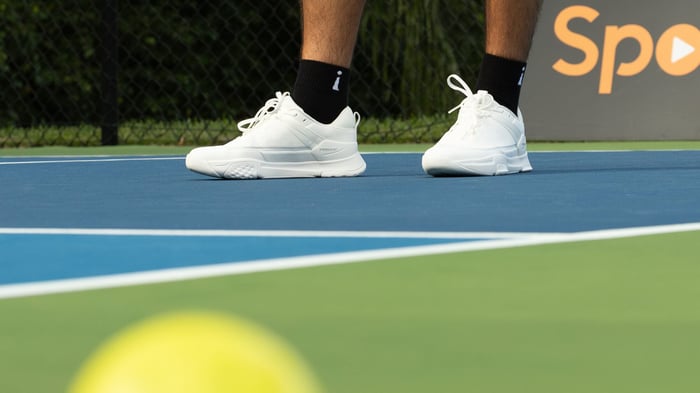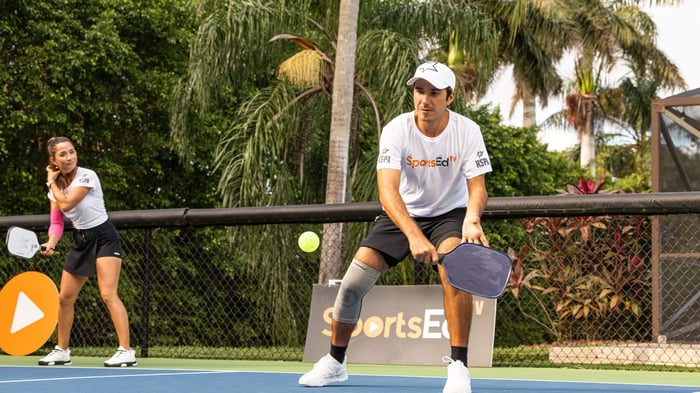Key takeaways:
Enhancing pickleball endurance through simple exercises improves physical performance, mental clarity, and social engagement on the court.
Dynamic warm-ups, agility drills, and strength training routines are essential for building stamina, preventing injuries, and boosting confidence during play.
A well-rounded exercise routine tailored for all ages and abilities fosters community connections while helping players stay active and competitive.
Pickleball exercise tips are a powerful way to elevate your game while supporting a more enjoyable and connected playing experience. Building endurance helps players stay present and engaged longer, allowing each match a chance for growth, camaraderie, and fun, on and off the court.
You don’t need complicated routines or high-end equipment to see results. Simple, consistent practices, like mobility warmups, core stability work, and short-burst conditioning, can improve stamina, prevent injury, and boost overall confidence. When you move well, you play better and connect more deeply with the people around you.
At PB5star, we offer performance-ready apparel that supports your endurance goals and helps you play with the energy, comfort, and style that strengthen the community.
Why endurance matters in pickleball: staying active and social
Picture yourself in the middle of an exciting rally with friends, moving smoothly from shot to shot without feeling winded or losing focus. Strong pickleball endurance enhances your playing experience, allowing you to stay engaged in longer matches and enjoy quality time on the court. Building endurance through targeted workouts helps maintain focus for quick reactions and smart plays, especially during competitive events.
Strong endurance allows players of all ages to confidently participate in tournaments, leagues, and social gatherings that define the pickleball community. Whether organizing local events or joining weekend round-robins, stamina allows you to play multiple games without feeling drained. When your body keeps up with your enthusiasm, you become a reliable partner and an engaged community member, ready to welcome newcomers and share in the joy of the game.
Essential warm-up exercises for pickleball players
Getting your body ready for pickleball doesn't have to be a solo activity. The best warm-up exercises for pickleball players work better as a group, creating energy and connection before you even step on the court. A proper dynamic warm-up lasting 8-10 minutes prepares your muscles and joints for the explosive movements that make pickleball engaging.
Arm circles and light jogging: Begin with arm circles and a light jog to boost circulation and elevate your heart rate. Doing this as a group helps build pre-game energy and encourages a sense of connection before play begins.
Practice leg swings as a group: Swing legs forward, backward, and sideways to activate hip joints and improve mobility. Practicing together creates a fun, synchronized routine that brings a touch of humor and unity to your warm-up.
Perform walking lunges with rotation: Engage your core and stretch hip flexors by performing walking lunges with an upper-body twist. Demonstrating proper form as a group helps support newcomers and builds mutual accountability.
Add lateral sumo lunges: Wide, controlled sumo lunges target the muscles used for side-to-side court movement. This exercise also reduces the risk of ankle injuries and can spark friendly competition among participants.
Include banded external rotation exercises: Use light resistance bands for external shoulder rotations to prepare for overhead shots. Sharing bands and encouraging each other make this warm-up social while supporting joint health and injury prevention.
A proper warm-up is more than just a physical routine; it’s an opportunity to connect, support one another, and set the tone for a positive playing experience. When warm-up routines are done with intention and shared among players, they foster camaraderie while reducing the risk of injury. These simple movements prepare your body for action and strengthen the community spirit that makes pickleball so unique.
Agility and footwork drills to boost court performance
Quick feet and sharp reflexes separate good players from great ones. Improving agility and pickleball footwork builds the foundation for faster reactions, smoother transitions, and more confident play. These drills work for players at any stage, creating opportunities for teammates to practice together.
Master ladder drills: Use agility ladders to build quick foot patterns and explosive movement. Drills like “5 Hops and Run” help increase speed and coordination, improving your ability to cover the court efficiently.
Practice split-step timing: Bounce lightly on your toes before your opponent strikes the ball. This split-second preparation sharpens your reaction time, allowing you to move quickly in any direction.
Incorporate side-to-side shuffles: Use cones or court lines to practice lateral shuffles while staying low and balanced. This trains the controlled footwork needed for swift directional changes during fast-paced rallies.
Set up cone weaving patterns: Weave through cones precisely to develop reflexes and quick turns. Practicing with partners adds friendly competition and reinforces the footwork needed for dynamic net play.
Organize group agility sessions: Create circuit-style sessions with various movement drills. Rotating through stations turns agility training into a fun, social experience that strengthens individual skills and group connection.
Remember that agility trumps speed in pickleball success. These drills help you move purposefully and precisely while creating shared experiences that unite players. Whether you're mentoring newcomers through their first shuffle drill or challenging seasoned players, it becomes another way to build the friendships that make pickleball special.
Strength training routines for injury prevention
Building strength in the right areas significantly improves performance and reduces injury risk for pickleball players who want to stay active and competitive. These strength training routines, which pickleball players can do anywhere, help target the muscles that work hardest during games while keeping you ready for those long tournament days with friends.
Goblet Squats and Split Squats: Strengthen your legs and core for better stability during quick direction changes and powerful shots from the baseline.
Lawnmower Rows with Resistance Bands: Build upper back and shoulder strength to support consistent strokes while reducing the risk of shoulder injuries common in racquet sports.
Bodyweight Lunges and Wall Push-Ups: Improve leg strength and stability, which prevent knee injuries during fast-paced rallies.
Resistance Band Shoulder Circles: Maintain shoulder flexibility and strength for a full range of motion during serves and overhead shots.
Plank Variations and Side Planks: Develop core stability to support better balance and reduce lower back strain during extended play sessions.
These exercises work perfectly as a group activity before or after court time and are easily adaptable for any fitness level. The resistance band options make them easy to pack for tournaments or practice sessions at different venues, and newer players can learn proper form by partnering with more experienced community members.
Sample pickleball exercise routine for all ages and abilities
Creating a well-rounded pickleball exercise routine for all ages means combining three core components: dynamic warm-ups, movement training, and targeted strength work. Start with 5-10 minutes of light movement like arm circles and gentle jogging to prepare your muscles. Follow this with agility drills such as lateral shuffles and cone patterns that mirror the quick directional changes you'll make on court.
The beauty of a thoughtful exercise routine lies in its adaptability to meet everyone where they are in their fitness journey. Beginners might start with bodyweight squats and modified push-ups, while more experienced players can add resistance bands or light weights. Strength training focusing on functional flexibility and leg strength enhances endurance and agility, with intensity adjusted based on individual comfort levels.
Play Better, Look Better: Join the PB5star Community
Pickleball exercise tips offer more than just physical benefits; they empower you to stay focused, agile, and engaged every time you step on the court. When endurance becomes part of your routine, your confidence grows, your play becomes more consistent, and your ability to connect with others deepens through shared effort and enjoyment.
Strengthening your body and mindset through purposeful training helps lay the groundwork for a more rewarding playing experience. Movement becomes more intentional, recovery feels faster, and your presence on the court inspires those around you. At PB5star, we’re proud to support that journey with performance gear, like our PB5 Court2 shoes, designed to match your drive, elevate your stamina, and keep you ready for every game.
FAQs
What are the best warm-up exercises for pickleball players?
Dynamic movements that prepare your body for quick direction changes work best before stepping onto the court. Leg swings, arm circles, and walking lunges help increase blood flow while activating the muscles you'll use during play. Spend 10-15 minutes on these movements rather than static stretching, which can temporarily decrease your strength and power.
How can I improve my agility and footwork for pickleball?
Ladder drills and cone exercises sharpen your reflexes and lateral movement patterns, which are crucial for court coverage. Practice split-step timing and shuffle techniques during your training sessions to reduce reaction time during actual games. These drills work perfectly as group activities at community courts, turning fitness into a fun social experience that builds skills and lasting friendships with fellow players.
What strength training routines help prevent injuries in pickleball?
Focus on exercises that target your legs, core, and shoulders since these areas handle the most stress during play. Strength training with resistance bands, bodyweight movements, and targeted exercises like glute bridges and box jumps can significantly reduce injury risks while improving performance. Consistency with 2-3 weekly strength sessions provides the best protection and power development.
How do I create a pickleball exercise routine for all ages and abilities?
Start with basic movements that everyone can perform, then offer modifications to match different fitness levels within your group. Combine 5-10 minutes of light cardio, dynamic stretching, agility work, and strength exercises in a balanced routine that can be scaled up or down. Remember that exercises can be adapted for small groups or solo practice, ensuring everyone stays active regardless of their situation or ability level.
How often should I do these exercises to see improvement?
Aim for 3-4 exercise sessions per week, mixing different types of training to keep things interesting and compelling. Your warm-up routine should happen before every game or practice session, while strength and agility work can be done on alternate days. Pay attention to how you feel and adjust the intensity based on your energy levels, remembering that consistency matters more than perfection when building long-term fitness habits.








